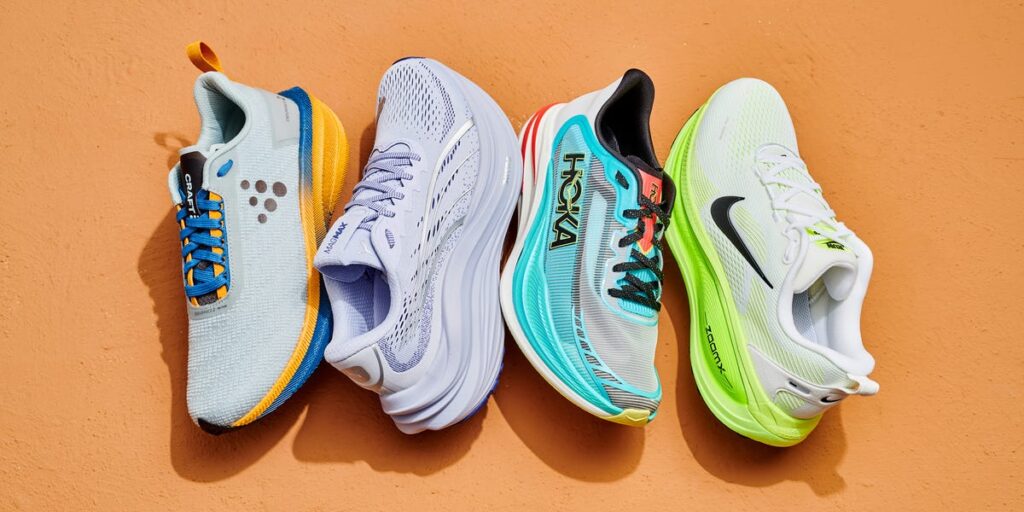The Different Types of Running Shoe Midsoles
The midsole is the portion of the shoe where the foam materials assist in shock absorption or even foot control. There are typically four type of midsole materials:
EVA: Ethylene vinyl acetate (both white and gray layers) has been the standard in midsole foams for its softness, flexibility, and low production cost since the 1970s. The downside is that it becomes more rigid in cold weather and compresses over mileage, losing its bounce.
PU: Compared with EVA, polyurethane is less sensitive to temperature, is more durable, and has a bouncier feel. However, PU is roughly 50 percent heavier than EVA.
TPU: Thermoplastic polyurethane is heated and reformed. Companies like Adidas and Saucony use a two-step process, making TPU beads and then fusing them to create a more durable, flexible, and bouncier foam than EVA and PU. However, TPU is still a heavier foam compared with EVA.
PEBAX: Polyether block amide (the top, off-white layer) gained recognition as the highly responsive foam used in the Nike Vaporfly 4%. Pebax retains its flexibility and energy return in cold conditions and is 20 percent lighter than TPU.
Generally the darker the midsole material, the more support the shoe will have (and also slightly heavier in weight).
Read the full article here



